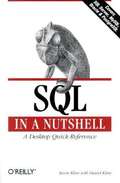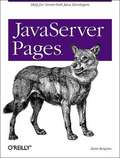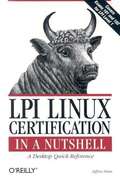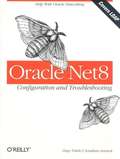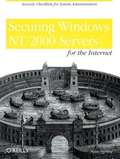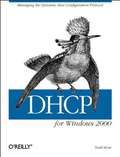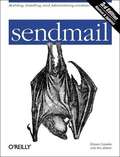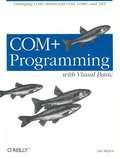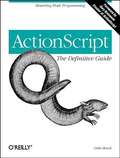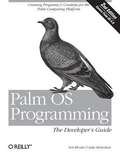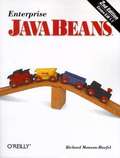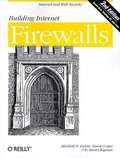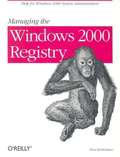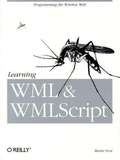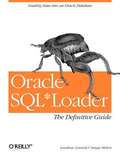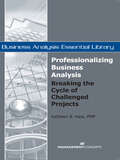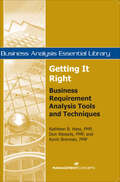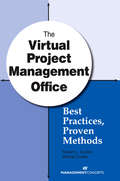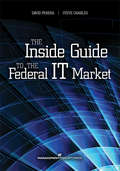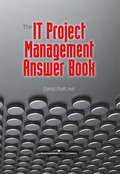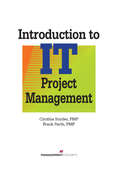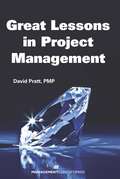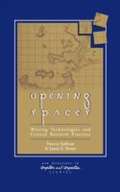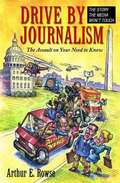- Table View
- List View
SQL in a Nutshell
by Kevin KlineSQL in a Nutshell is a practical and useful command reference to the latest release of the Structured Query Language (SQL99). For experienced SQL programmers, analysts, and database administrators, it's a handy key to each of the SQL commands and its use in both commercial (Microsoft SQL Server 2000 and Oracle 8 i ) and open source (MySQL, PostgreSQL 7.0) implementations. SQL in a Nutshell is also a great learning resource for novice and auxiliary SQL users.
Java Server Pages
by Hans BergstenJavaServer Pages (JSP) technology provides an easy way to create dynamic web pages. JSP uses a component-based approach that allows web developers to easily combine static HTML for look-and-feel with Java components for dynamic features. The simplicity of this component-based model, combined with the cross-platform power of Java, allows a web development environment with enormous potential. JavaServer Pages shows how to develop Java-based web applications without having to be a hardcore programmer. The author provides an overview of JSP concepts and discusses how JSP fits into the larger picture of web applications. Web page authors will benefit from the chapters on generating dynamic content, handling session information, accessing databases, authenticating users, and personalizing content. In the programming-oriented chapters, Java programmers learn how to create Java components and custom JSP tags for web authors to use in JSP pages.
LPI Linux Certification in a Nutshell
by Jeff DeanLPI Linux Certification in a Nutshell prepares system administrators for the basic LPI General Linux 101 exam and the more advanced 102 exam. The book is divided into two parts, one for each of the LPI exams. Each part features a summary of the exam, a Highlighter's Index, labs, suggested exercises, and practice exams to help you pass the LPI exams with flying colors.
Oracle Net8 Configuration and Troubleshooting
by Jonathan Gennick Hugo ToledoDescribes everything DBAs need to know to install configure, tune, and troubleshoot Net8, Oracle's networking technology. It covers the Oracle Internet Directory (OID), Oracle Names; the Multi-Threaded Server (MTS); and the Oracle Connection Manager, as well as the Oracle networking utilities (lsnctl, namesctl, cmctl, tnsping, Net8 Assistant, Net8 Easy Config, and Net8 Configuration Assistant). In addition, it provides networking troubleshooting techniques, commonly encountered Net8 configuration problems,
Securing Windows NT/2000 Servers for the Internet
by Stefan NorbergIn recent years, Windows NT and 2000 systems have emerged as viable platforms for Internet servers, but securing Windows for Internet use is a complex task. This concise guide simplifies the task by paring down installation and configuration instructions into a series of security checklists for security administration, including hardening servers for use as "bastion hosts," performing secure remote administration with OpenSSH, TCP Wrappers, VNC, and the new Windows 2000 Terminal Services.
DHCP for Windows 2000
by Neall AlcottDynamic Host Configuration Protocol (DHCP) is an open standard Internet protocol used to allocate and manage IP addresses dynamically. Before DHCP came along, administrators had to manually configure each host on a network with an IP address, subnet mask, and default gateway. Maintaining the changes and the associated logs took a tremendous amount of time and was prone to error. DHCP uses a client/server model in which the system updates and maintains the network information dynamically. Windows 2000 provides enhanced DHCP client-server support. DHCP for Windows 2000 is custom-designed for system administrators who are responsible for configuring and maintaining networks with Windows 2000 servers. It explains the DHCP protocol and how to install and manage DHCP on both servers and clients--including client platforms other than Windows 2000. Readers get detailed and explicit instructions for using Windows 2000 DHCP to manage their network IP configurations much more efficiently and effectively.They get background information for using DHCP in general, plus complete information about the Windows 2000 use of DHCP. For those interested in what's on the horizon, the author steps up to the plate with an analysis of the future direction of DHCP and Windows support for IPv6.
sendmail, 3rd Edition
by Bryan CostalesThe new edition of sendmailhas been completely revised to cover sendmail 8.12--a version with more features and fundamental changes than any previous version of the Unix-based email routing program. Because the latest version of sendmail differs so significantly from earlier versions, a massive rewrite of this best-selling reference was called for. With sendmail, Third Edition in hand, you will be able to configure this challenging but necessary utility for whatever needs your system requires.
COM+ Programming with Visual Basic
by Jose MojicaCOM+ Programming with Visual Basic draws from the author's wide experience as a COM+ developer and instructor. The first part shows you how to create robust, efficient, high-performance COM+ applications. The second focuses on incorporating individual COM+ services, like transaction support, security, and asynchronous operations, into applications. Not for beginners, this book reveals how COM+ really works, as well as how to make COM+ components work with the upcoming Microsoft .NET architecture.
COM+ Programming with Visual Basic
by Jose MojicaThe importance of a book like COM+ Programming with Visual Basic lies in the fact that the Visual Basic programming environment is designed to hide as many low-level system details as possible. While this approach can speed development time by letting you focus on the task at hand, it actually hinders the process when it obscures details you need to understand or control. Such is often the case for programmers who are developing components that take advantage of COM+ services. COM+ Programming with Visual Basic takes aim squarely at the information needs of these developers. For instance, despite the marketing hype about COM+ as the new and improved version of COM, classic COM is very much the foundation on which COM+ is built: COM+ components are a particular kind of COM component. Visual Basic hides almost all COM implementation details; yet it is precisely in the area of COM+ programming that these hidden details are most important. Therefore, we've devoted significant content to exploring COM internals: Interface-based programming How COM interfaces work internally How COM components are activated How versioning COM components works in Visual Basic How to use interfaces Passing objects by reference or by value What it means to have multithreaded applications How declarative programming works How to program within a distributed transaction How to add role-based security to applications The second section focuses on incorporating individual COM+ services, like transaction support, security, and asynchronous operations, into applications. The author concludes by discussing what you need to learn to transition to Microsoft's coming .NET framework. Regardless of what lies ahead for .NET, many distributed systems are being built today with COM+. COM+ Programming with Visual Basic focuses on topics relevant to distributed applications that are here to stay: There's simply no other documentation available for much of what's in COM+ Programming with Visual Basic. It's destined to be the resource behind the most robust, efficient, high-performance COM+ applications.
ActionScript: The Definitive Guide
by Colin MoockGiven its ability to deliver high-impact experiences even over low-bandwidth connections, Flash has become the de facto standard for hundreds of thousands of multimedia web developers worldwide. Flash 5 now includes a new full-fledged programming language called "ActionScript" for controlling animation and multimedia. It's a quantum leap from the bare-bones "Actions" supported in Flash 4, and ActionScript: The Definitive Guide is the first book dedicated entirely to documenting and demonstrating this new language. ActionScript includes all fundamental programming constructs (variables, loops, conditionals, functions, etc.), and is inextricably fused with Flash's authoring behaviors and animation timelines. Because ActionScript is based heavily on the ECMAScript Language Specification (ECMA-262) and is syntactically nearly identical to JavaScript, Macromedia expects thousands of existing JavaScript programmers to migrate to ActionScript. This book is divided into three sections. "ActionScript Fundamentals" introduces both programmers and non-programmers to the new language by first describing fundamental programming concepts and then delineating in detail the components, syntax, and usage of ActionScript. "Applied ActionScript Code Depot" shows you how to use common applications, such as processing online forms. "Language Reference" is a concise and detailed reference that makes all ActionScript globals, properties, and objects, including extensive implementation samples, easy to find quickly. Step-by-step tutorials of the most common ActionScript behaviors Object-oriented programming in Flash Intelligent interface development Server communication Dynamic content generation Password protection String handling Message boards Basic physics Games Code samples are also available from the "Code Depot" on the author's web site devoted to Flash developers. Topics covered in this book include: ActionScript: The Definitive Guide is structured so both programmers and non-programmers can learn how to use ActionScript. This book will take you well beyond simple Flash animations so you can create your own enhanced Flash-driven sites.
Palm OS Programming: The Developer's Guide, 2nd Edition
by Julie Mckeehan Neil RhodesPalm OS Programming: The Developer's Guide , Second Edition shows intermediate to experienced C and C++ programmers how to build a Palm application from the ground up. The book follows up the success of our best-selling first edition with expanded coverage of the Palm OS, up to and including the latest version, 4.0. This book will set the standard for the next generation of Palm developers.
Enterprise JavaBeans, 2nd Edition
by Richard Monson-HaefelEnterprise JavaBeans (versions 1.1 and 1.0) is an important technology for server-side application development in Java. It offers a component architecture for developing distributed, multitiered enterprise applications. This model allows you to build complex, mission-critical systems using simple snap-together pieces that model individual business objects and processes. Enterprise JavaBeans (EJB) greatly simplifies the process of development by automatically taking care of system issues like object persistence and transaction management. This book provides a thorough introduction to EJB 1.1 and 1.0 for the enterprise software developer. It shows you how to develop enterprise Beans to model your business objects and processes. One powerful advantage of the EJB architecture is that it allows you to partition work appropriately between different parts of the system: the database provides persistence, your Beans model various business entities and the interactions between them, and your client application provides a user interface, but incorporates minimal business logic. The end result is a highly flexible system built from components that can easily be reused, and that can be changed to suit your needs without upsetting other parts of the system. Enterprise JavaBeans, 2nd Edition teaches you how to take advantage of the flexibility and simplicity that this powerful new architecture provides. This book covers: Enterprise JavaBeans 1.1 and 1.0 Developing entity Beans and session Beans XML Deployment Descriptors Using the client-side API to use enterprise Beans Transaction Management Design Strategies Introduction to J2EE
Building Internet Firewalls, 2nd Edition
by D. Brent Chapman Simon Cooper Elizabeth D. ZwickyCompletely revised and much expanded, the new edition of the highly respected and bestselling Building Internet Firewalls now covers Unix, Linux, and Windows NT. This practical and detailed guide explains in step-by-step fashion how to design and install firewalls and configure Internet services to work with a firewall. It covers a wide range of services and protocols and offers a complete list of resources, including the location of many publicly available firewalls construction tools.
Managing the Windows 2000 Registry
by Paul RobichauxThe Windows 2000 Registry is the repository for all hardware, software, and application configuration settings. Managing the Windows 2000 Registry is the system administrator's guide to maintaining, monitoring, and updating the Registry database. A "must-have" for every 2000 system manager or administrator, it covers what the Registry is and where it lives on disk, available tools, Registry access from programs, and Registry content.
Learning WML & WMLScript
by Martin FrostThe next generation of mobile communicators is here, and delivering content to them will mean programming in WML (Wireless Markup Language) and WMLScript, the languages of the Wireless Application Environment (WAE). The WAE allows information in almost all applications to be formatted for display on mobile devices, such as cell phones, and enables the user to interact with the information. Why learn yet another technology? According to some estimates, 75 percent of web document viewing by the year 2002 will be through non-desktop devices, many using wireless technologies. Clearly, the future is wireless. For web developers who want to get up to speed quickly in these languages, Learning WML & WMLScript maps out in detail the WAE and its two major components, WML and WMLScript. Fortunately, the WAE provides a World Wide Web-like model for writing applications, incorporating several key features of the Web to ease the transition for developers. Almost all wireless applications can be written with WML, which replaces HTML in the wireless environment, and WMLScript, which replaces JavaScript. With this book, web developers with some knowledge of programming and C, Java, or JavaScript syntax can easily master both languages. Chapter by chapter, Learning WML & WMLScript takes readers through the following WML topics: *Decks, templates and cards *User Interaction *Variables and contexts *Tasks, events, and timers *Text and text formatting *Data types, conversions and variables *Operators and expressions *Statements *Functions *Standard libraries. WMLScript topics include: Learning WML & WMLScript is the resource of choice for application developers who want to upgrade their skills and their sites so they won't be left plugged in during the wireless revolution.
Oracle SQL*Loader: The Definitive Guide
by Jonathan Gennick Sanjay MishraDespite the wide availability and use of SQL*Loader, few Oracle DBAs and developers know how powerful it really is. This book describes all of SQL*Loader's functions, including how to construct the necessary control files, load different types of data, and get the best performance. It covers the newest SQL*Loader features--the loading of large object (LOB) columns and the new object types (nested tables, varying arrays, and object tables).
Professionalizing Business Analysis: Breaking the Cycle of Challenged Projects
by Kathleen B. Hass PMPA Volume of the Business Analysis Essential Library Series Uncover the role of the business analyst as the business and technology strategist who provides the executive leadership team with the information, process, tools, and capability to make the best decisions. The Business Analyst as Strategist: Translating Business Strategies into Valuable Solutions outlines the first two phases of the business solution life — strategic planning and enterprise analysis –– that the future vision of the enterprise is established, strategic goals and measures are set, and the most viable programs and supporting projects are initiated to achieve the strategy. Learn how to set the stage for change, and how to translate your strategy into operational terms through a portfolio of programs and supporting projects. Understand the five-step process to set well-formed strategies and how to execute them. Through this book you will master business analysis competencies, learn how to react effectively, anticipate changes in the marketplace, and flow value through the enterprise to the customer, thus achieving competitive advantage.
Getting It Right: Business Requirement Analysis Tools and Techniques
by Kevin Brennan Don Wessels Kathleen B HassVolume of the Business Analysis Essential Library SeriesGetting It Right: Business Requirement Analysis Tools and Techniques, presents principles and practices for effective requirements analysis and specification, and a broad overview of the requirements analysis and specification processes. This critical reference is designed to help the business analyst decide which requirement artifacts should be produced to adequately analyze requirements. Examine the complete spectrum of business requirement analysis from preparation through documentation. Learn the steps in the analysis and specification process, as well as, how to choose the right requirements analysis techniques for your project.
The Virtual Project Management Office: Best Practices, Proven Methods
by Robert L. Gordon DM Wanda Curlee DM, PMP, PgMP, PMI-RMPSuccessfully Launch and Operate a Virtual Project Management OfficeNew technology and global businesses and organizations are making virtual project management offices (VPMOs) more important and more prevalent than ever. Successfully operating a VPMO requires project managers to employ additional skills and address different challenges from those necessary to operate a traditional PMO. For example, the virtual project manager must have effective soft skills to build trust among a dispersed team and to select the best forms of communication. He or she must also ensure compliance with the unique policies, procedures, and laws relevant to maintaining a VPMO.This book offers best practices for successful virtual projects and the most effective ways to create and implement a PMO in a virtual environment. It's a valuable resource for companies considering a VPMO and those already operating one.You'll find:- Proven implementation plans- Guidance for building a business case- Laws and ethics governing VPMOs- Tips and advice from expertsPlus! Dozens of practical tools to use in launching a VPMO or improving an existing project management office.
The Inside Guide to the Federal IT Market
by David Perera Steve CharlesUnlock the Door to the Federal IT MarketplaceHere's your key to selling IT goods and services to the government. David Perera and Steve Charles present the ins and outs of successfully competing for—and winning—a share of the tens of billions of dollars the federal government spends each year on IT. Getting a piece of that business is not easy—it takes accurate knowledge of systems and procedures, as well as sharp insight into the structure and details of government procurement.The Inside Guide to the Federal IT Market penetrates the haze of jargon and apparent complexity to reveal the inner workings of the IT contracting process. Whether you're just setting out or seek a bigger share, this comprehensive book provides valuable information you can put to immediate use. The Inside Guide to the Federal IT Market covers:• Technology standards• Basic contracting concepts• Advanced contracting concepts, such as getting on and staying on the GSA schedules• The effect of the federal budget process on the sales cycle• What you need to know about ethics to earn business fairly, without avoidable delays and hassleThis book's focus on the IT market makes it a unique reference on federal procurement for private companies. Government procurement personnel will also find the depth and breadth of coverage useful in reviewing and evaluating IT offerings.
The IT Project Management Answer Book
by David Pratt PMPZero in on the answers to your IT project management questionsWith constrained schedules and anxious stakeholders eager for results, the typical IT project team doesn't have the luxury of wading through lengthy tomes to find solutions. The IT Project Management Answer Book guides you to the specific answers you need to successfully conduct and complete your IT project.Written in an easy-to-use question-and-answer format, the book covers all aspects of managing an IT project, from initial organizational issues to closeout. Following the classic project management processes, author David Pratt builds on the basics to offer valuable insights not found in other resources, including:• Proven techniques such as the best way to manage defects• How to create performance standards for outside contractors• How to develop a user's manualFor more technically inclined team members, the author's plain-speak approach presents a refreshing view of the IT world. For those less technically oriented, he describes the tools and solutions for dealing with IT project challenges in an accessible, straightforward way. Let this information-packed resource lead you and your team to IT project success.
Introduction to IT Project Management
by Cynthia Snyder PMP Frank Parth PMPIntroduction to IT Project Management provides IT project managers the practical tools needed to maintain daily operations while managing multiple projects. This valuable reference helps IT project managers, CIOs, and project sponsors understand the IT project environment so that projects can be managed much more efficiently and successfully. An instructor's guide is available.
Great Lessons in Project Management
by David Pratt PMPLearn from Other Projects to Avoid Pitfalls on Your Projects!Projects fail at an alarming rate, whether they are information technology, training, construction, or policy development projects. No matter the focus, each year we experience an abundance of challenged projects that either require super-human effort to resuscitate or die an untimely death.Great Lessons in Project Management is a treasure trove of lessons learned from troubled projects—and from projects that went well. This collection of stories describes the events surrounding a particular challenge a project manager faced or a tool that another used effectively. Project managers of all types of projects can draw on these stories to validate their own good practices and to avoid the pitfalls so many have encountered on their projects.
Opening Spaces: Writing Technologies and Critical Research Practices
by Patricia Sullivan James E. PorterThis book argues for a "post critical research methodology" and applies this frame to the study of computers and writing: the book opens a space where theoretical scholarship and empirical research can interact.
Drive-By Journalism: The Assault on Your Need to Know
by Arthur RowseA sobering look at the effect of mega-corporate media dominance; puts the lie to the myth of liberal bias in the mass media.
